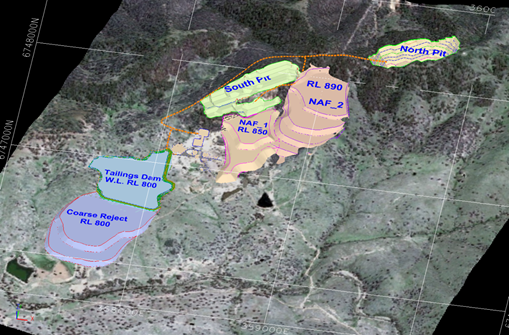Aus Tin Mining Ltd advises that test results for preliminary ore‐sorting test work for the Taronga tin project have been received from TOMRA Sorting Solutions, the results indicating that ore sorting is effective for Taronga ore.
TOMRA undertook a suite of standard static tests on a 60 kg parcel of Taronga ore using X‐Ray Transmission (XRT) ore sorting technology. The XRT tests proved the Taronga ore could viably separate the high density tin mineral cassiterite, from the low density waste material. Analytical results for the standard static test indicate an overall 54% increase in head grade (0.56%Sn to 0.86%Sn) whilst achieving 96% tin recovery. The company will accelerate the next stage of test work with a 2 t bulk sample through TOMRA’s pilot facility in Sydney, the results from bulk test work generally providing sufficient information for scale‐up to a full‐scale production plant.
Of significance were the results for the +8mm to ‐25mm size fraction where the head grade was increased 240% whilst achieving tin recovery of 93%, and 66% of the mass being rejected as waste.
The 2014 PFS for Taronga assumed pre‐concentration of the ore would be undertaken by Heavy Medium Separation technology, with tin recovery of 85% and a mass rejection of 60%.
Based on the results for the +8mm to ‐25mm size fraction, ore‐sorting at Taronga could provide for increased mass rejection (lower CAPEX) and higher tin recovery (increased revenues).
Ore‐sorting is not practical for minus 8mm material, and in operations a screened undersize would be directed to the processing plant. In conjunction with the next program of bulk test work, the company will evaluate the optimal process to upgrade the ‐8mm material. This work will likely incorporate gravity separation.
Ore‐sorting is becoming increasingly widespread in minerals processing for the upgrading of tin ores. Minsur installed TOMRA XRT ore sorters at its San Rafael mine (third largest mine globally1) in 2016 enabling it to treat previously sub‐economic material and increase tin production. It is reported the capital cost of the ore sorter was repaid within four months. Metals X Ltd is installing TOMRA ore sorters at its their Renison mine (sixth largest mine globally1) and has forecast tin production to increase by 15 to 20%.
The company has received from TOMRA an agreement to lease/purchase a XRT ore sorting facility. Subject to the outcome of the program of bulk test work the company may consider progressing an agreement for the Taronga Stage 1 project. The company has previously reported on the amenability of ore‐sorting for the high cobalt grade mineralisation at Mt Cobalt and if the Company purchased an ore sorter, consideration could be given to the potential employment of the ore sorter at Mt Cobalt once Taronga Stage 1 is completed. The company will also evaluate the potential application of ore sorting at the historic sub‐economic mine dumps at the Granville East mine.
The diagram shows an overview of the life of mine pit shells for Taronga and associated infrastructure.
The Taronga project lies some 7 km northwest of Emmaville (northern New South Wales) within the company’s wholly owned exploration license EL8407. Emmaville is a historic tin field with over 88,000 t of contained tin having been produced since the 1870s. Previous owners BHP and Newmont undertook extensive exploration at the project during the 1930-50s and 1970-80s respectively.











